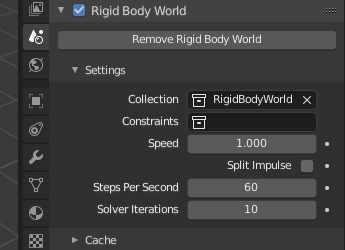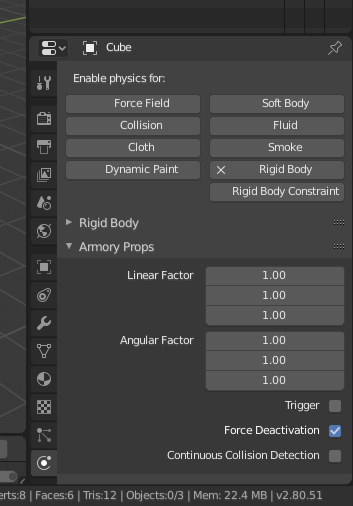Sure thing. ![]()
In Blender Game Engine, it would be using Bullet just like Blender Render, but in Blender Render, like you said, it has a different panel for Physics settings.
Armory tends to use the existing panels for settings, if they are there, and supplement those panels with additional Armory Props panels for settings that don’t already exist.
For the physics accuracy and timing settings, Armory would probably use the Physics world panel, but I haven’t tested it recently to see if those values are respected by the Armory game yet.

Edit: Also,
